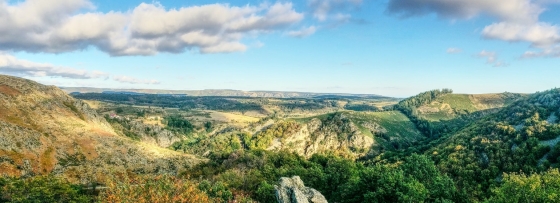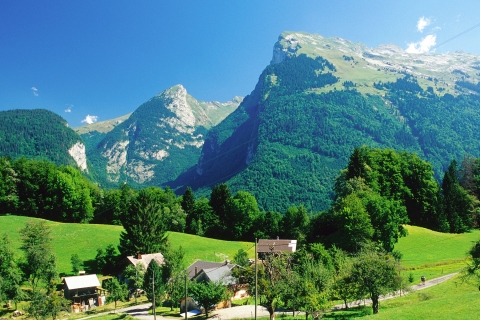Les Angles Gard Temperatures: Monthly Averages and Year-Round Insights
On this page, we’ll explore Les Angles Gard’s temperature statistics in detail, including day and night variations and monthly averages. We’ll also compare the annual temperature to other cities in France.
Monthly Temperature Averages
The climate in Les Angles Gard is dynamic, ranging widely from moderate in winter to very warm in summer. Typically, maximum daytime temperatures range from a very warm 33°C in July to a moderate 12°C in the coolest month, January. Nights are cooler, with temperatures generally dropping to 3°C, particularly during the colder months.
The chart below illustrates the average maximum day and minimum night temperatures in Les Angles Gard by month:
The minimum temperature is commonly observed between 4 AM and 6 AM, with the maximum occurring around 3 PM, when the sun’s strength is at its peak. July, the city’s warmest month, sees 371 hours of sunshine.
The chart below shows the average temperature throughout the year:
January, the city’s coldest month, sees about 61 mm of rainfall spread over roughly 10 days. It records 145 hours of sunshine of sunshine.
Annual Temperatures in France Compared
The map below shows the annual temperature across France. You can also select the different months in case you are interested in a specific month.
 very warm
very warm
 warm
warm
 pleasant
pleasant
 moderate
moderate
 cold
cold
 very cold
very cold
Les Angles Gard Temperatures Compared World Wide
Les Angles Gard’s average annual maximum temperature is 22°C. Let’s compare this with some popular tourist destinations:
Athens, Greece, experiences an average annual temperature of 23°C, with hot summers and mild winters typical of a Mediterranean climate.
Interlaken, Switzerland, the average annual temperature is significantly lower at 8°C, with mild summers and very cold winters.
In Shanghai, China, the annual average temperature is 21°C, offering warm summers and mild winters.
In Tokyo, Japan, the average annual temperature is 21°C, expect warmer summers and milder winters.
How are these Temperatures Measured?
Generally, temperature data depicting climate is usually given over a 30-year average in order to reduce short-term fluctuations and reveal better long-term trends in climate conditions.
This temperature data is taken from land-based thermometers, ocean buoys, ships, and satellites. These measurements are transmitted to weather stations and climate centers around the globe where they are processed, averaged, and analyzed in order to monitor the trends and create climate models.
Global Warming and Its Effects
Climate change is affecting worldwide temperatures, including in Les Angles Gard. It has massive impacts on both local and global levels:
- Global Temperature Rise: The average global land and sea temperatures have risen by about 1.2°C since pre-industrial times.
-
Local Impacts: Most regions of the world are witnessing warmer winters with fewer frost and snowfall days. The global frequency and severity of heatwaves have increased. For example, Europe's summers of 2018, 2019, and 2020 all broke records. Summers are also becoming drier; however, during winter, inland regions have experienced increased rainfall. This has caused elevated river levels and more cases of flooding.
Many countries are experiencing earlier springs and later autumns. This is why some bird species have shifted their migration dates.
For more detailed information about Les Angles Gard’s weather, including monthly rainfall, sunshine hours, and humidity levels, visit our Les Angles Gard climate page.
Current temperature in Les Angles Gard
broken clouds and no rain
overcast and chance of slight rain
broken clouds and chance of rain




